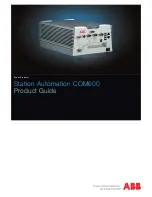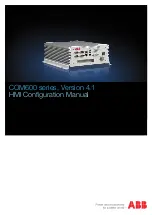
work has a parameter that uniquely identifies the network and is comparable with a domain
name. Only clients with a network configuration that matches that of your device can com-
municate in this WLAN. The corresponding parameter is called the network name. In the
network environment, it is sometimes also referred to as the SSID.
Protection of wireless networks
As data can be transmitted over the air in the WLAN, this data can in theory be intercepted
and read by any attacker with the appropriate resources. Particular attention must therefore
be paid to protecting the wireless connection.
There are three security modes, WEP, WPA-PSK and WPA Enterprise. WPA Enterprise of-
fers the highest level of security, but this security mode is only really suitable for compan-
ies, because it requires a central authentication server. Private users should choose WEP
or preferably WPA-PSK with higher security as their security mode.
WEP
802.11 defines the WEP security standard (Wired Equivalent Privacy = encryption of data
with 40 bits (Security Mode =
WEP 40
) or 104 bits (Security Mode =
WEP 104
). However,
this widely used WEP has proven susceptible to failure. However, a higher degree of se-
curity can only be achieved through hardware-based encryption which required additional
configuration (for example 3DES or AES). This permits even sensitive data from being
transferred via a radio path without fear of it being stolen.
IEEE 802.11i
Standard IEEE 802.11i for wireless systems contains basic security specifications for wire-
less networks, in particular with regard to encryption. It replaces the insecure WEP (Wired
Equivalent Privacy) with WPA (Wi-Fi Protected Access). It also includes the use of the ad-
vanced encryption standard (AES) to encrypt data.
WPA
WPA (Wi-Fi Protected Access) offers additional protection by means of dynamic keys
based on the Temporal Key Integrity Protocol (TKIP), and offers PSK (Pre-Shared Keys) or
Extensible Authentication Protocol (EAP) via 802.1x (e.g. RADIUS) for user authentication.
Authentication using EAP is usually used in large wireless LAN installations, as an authen-
tication instance in the form of a server (e.g. a RADIUS server) is used in these cases. PSK
(Pre-Shared Keys) are usually used in smaller networks, such as those seen in SoHo
(Small office, Home office). Therefore, all the wireless LAN subscribers must know the
PSK, because it is used to generate the session key.
Funkwerk Enterprise Communications GmbH
8 Wireless LAN
bintec R200 Series
143
















































